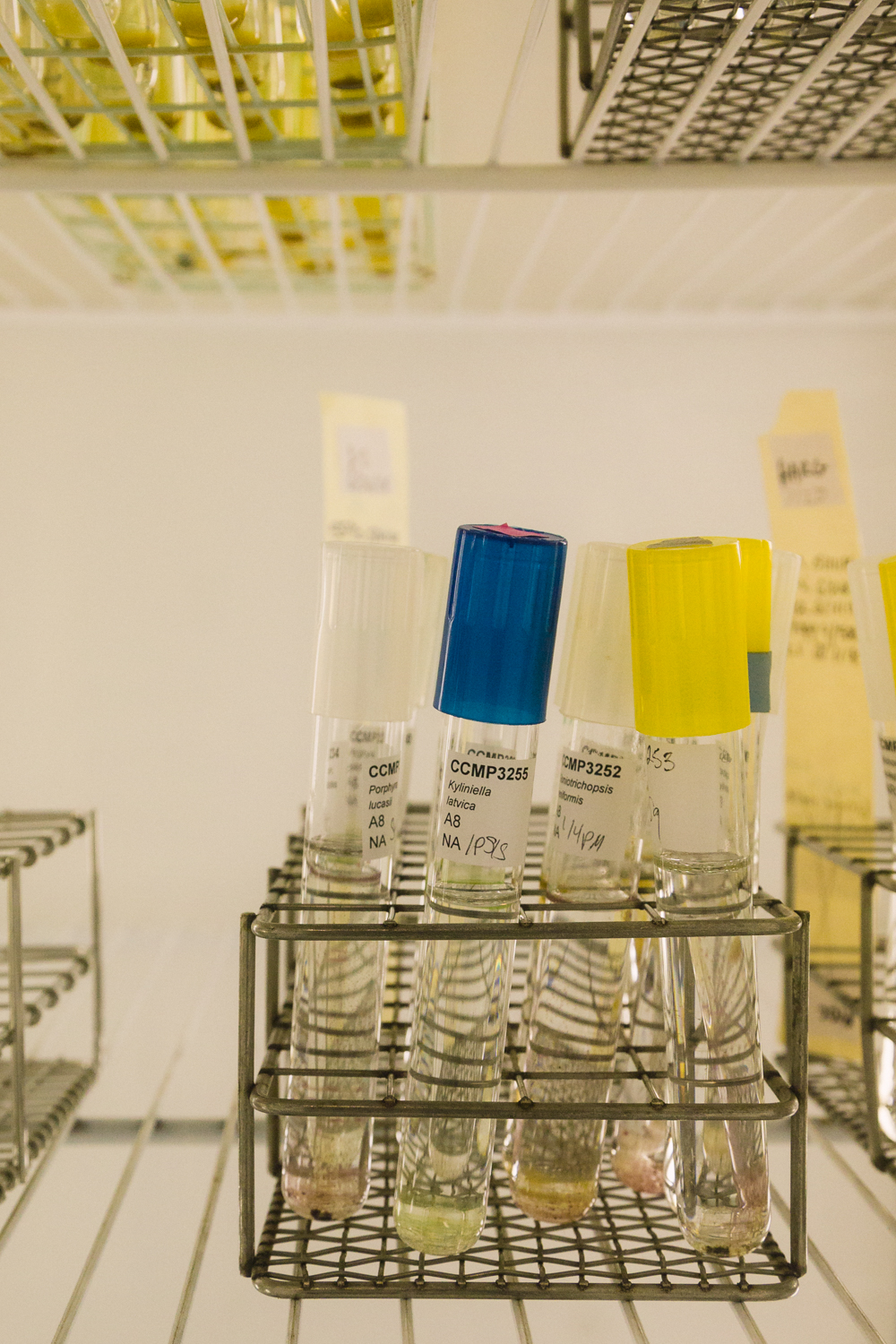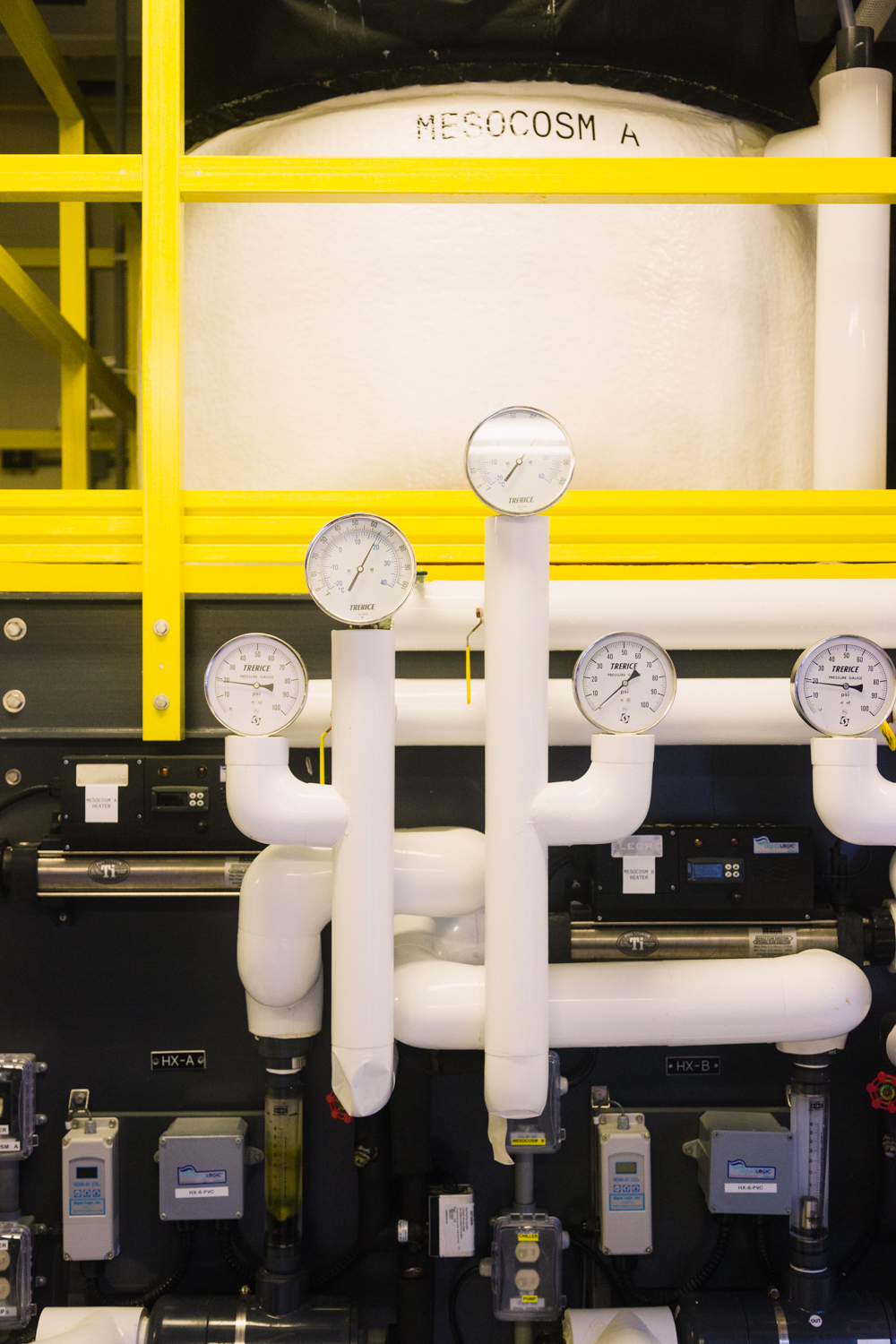Café Sci: When Mussels Meet Kelp
Presented By:
You could be forgiven for calling HM Payson a wealth management firm. But within the firm’s walls, these advisors see themselves as something different: stewards. The 164-year-old company is entrusted by families as stewards of multi-generational wealth and has also taken it upon itself to extend that stewardship to the world where future generations will live.
That’s why, over the past few years, HM Payson has supported Bigelow Laboratory for Ocean Sciences of East Boothbay, Maine. Each summer, HM Payson’s support has helped Bigelow Laboratories run a lecture series called Café Sci, which is open to the public and covers the groundbreaking research being done at Bigelow.
And while Bigelow conducts research all around the globe, I recently visited its East Boothbay headquarters for a Café Sci lecture on a topic much closer to home -- one that many Maine the Way readers might be familiar with: Maine mussels.
When I get a mesh bag of fresh Maine mussels from the fish market, I want the mussels with the thickest shells and the meatiest bodies; who wouldn’t?
As we wrote in our story on Bangs Island Mussels in Issue 01 of Maine the Way, Matt Moretti and his father Gary are using Matt’s background in marine biology to inform decisions about site placement that maximize growing conditions for their mussels and grow the largest and healthiest mussels they can. At the same time, a team at Bigelow Laboratory for Ocean Sciences spearheaded by Dr. Nichole Price has been researching the effects of growing sugar kelp in close proximity to mussels, and the Morettis have joined the project as industry partners.
On a muggy and fog-bound July afternoon, I head up to the Bigelow Laboratory in East Boothbay, Maine to learn more about this project. After turning onto a long and winding drive, I crest a hill and arrive at the laboratory. It is a state-of-the-art modern building, LEED Platinum certified I’m later told, perched on the hill overlooking the Damariscotta River (or so I have to assume given the thick fog that obscures my view).
I’m met inside by Steven Profaizer, director of communications at Bigelow Laboratory. After a quick introduction, he begins giving a tour of the facility and the different projects going on at the lab. It is his role to distill the complex science being conducted in these glass-walled labs down into something the public can understand and connect with. He leads me through a lab that tests for red tide, the toxic algal bloom that can infect shellfish, another room with temperature-controlled samples of over 3,000 phytoplankton species —the largest such collection in the world—and even to a lab where two torpedo-shaped autonomous sampling drones that crisscross the deep water of the Gulf of Maine are being worked on between dives.
“There’s a huge variety of projects going on here at Bigelow,” he tells me. “A good number are focused right here on the Gulf of Maine, but we also have projects ongoing in Antarctica, the Pacific…actually, we have projects in all of the world’s oceans.”
Many of the projects are extremely focused, and seemingly niche—for example, the ongoing DNA sequencing of marine microorganism genomes—but Steven explains how the potential ramifications of such a project could be sweeping. “Take for example the DNA of some organisms that live in inhospitable conditions of the ocean—these organisms may tell us what we could expect to find in other inhospitable places, such as in the search for extraterrestrial life. The potential effects of this research can extend well beyond the oceans.”
I’m already thoroughly wowed when Steven leads me to the office of Dr. Nichole Price, whose ongoing research on kelp falls under Bigelow’s Center for Seafood Solutions. Through partnerships with stakeholders interested in furthering scientific knowledge on aquaculture, Dr. Price’s team and other scientists at Bigelow Laboratory aim to improve the profitability and sustainability of the seafood industry. For the last three years, she has been looking at how kelp—and in particular, sugar kelp—can be grown alongside mussels to improve their yield. Here’s an over-simplified explanation of how it works:
As we are (hopefully) all aware, humans have been spewing greenhouse gasses—particularly carbon dioxide—into the atmosphere, where they have been causing a global temperature increase. At the same time though, vast quantities of carbon dioxide are dissolving into the world’s oceans. This causes ocean acidification (‘Why’ I hear you ask? Think back to your high school chemistry class—water [H2O] and carbon dioxide [CO2] combine to create carbonic acid [H2CO3]). One effect of this acidification is the chemical erosion of carbonate-based materials in the ocean including coral reefs and the shells of mollusks like clams, oysters, and mussels. In fact, oysters are already spawned in carefully regulated water out of the oceans as they cannot readily grow in the acidic ocean water, and it is expected that as oceans continue to get more acidic mussels will face similar threats.
Luckily, just like on land where plants use carbon dioxide and release oxygen to create energy, seaweeds like kelp can mop up carbon dioxide and release oxygen as a byproduct. This, in turn, helps to reduce the acidity caused by that carbon dioxide. Furthermore, kelp can be grown on aquaculture farms not dissimilar from those of mussels. Could this be a match made in heaven?
That is what Dr. Price and Matt Moretti set out to discover when they relocated some of Bangs Island's mussels to the nearby Ocean Approved kelp farm earlier this year. Following close monitoring, it became clear that the kelp helped to create a bubble of less acidic water that benefited the mussels. The end result? The mussels grown alongside the kelp have demonstrably thicker shells with fewer weaklings prone to cracking. They also have noticeably more meat in each shell than mussels grown away from the kelp.
Dr. Price leads us downstairs in the lab where she and her team have created an apparatus for the next stage of their research: a series of airtight containers filled with seawater where they will grow mussels and kelp under controlled scientific conditions. “I’m very excited about this!” Dr. Price beams as she surveys the plexiglass tanks under bright LED lights.
At ten minutes to five, we make our way back upstairs to the atrium, which is already packed with people who have come to attend Café Sci, the weekly talk series presented by HM Payson. This week, Dr. Price who is sharing her research. I am blown away by the turnout—more than 170 seats are filled and there is a group standing at the back of the room. I ask Steven, “Where do all of these people come from?”
“Mostly from Boothbay and the surrounding towns,” he tells me. Amazing. I think it is so cool that almost two hundred community members are interested and engaged in the science coming out of this lab, and that Bigelow Laboratory for Ocean Sciences, with the financial support of HM Payson, makes it a priority to share its work with the local community.
Following the extraordinary presentation and a number of thoughtful and hard-hitting questions from the community, I had one last quick conversation for Steven. “I’m truly floored that this state-of-the-art scientific institution is based right here in Boothbay,” I tell him. “But I’m interested to know, how is it all funded? Most other scientific labs seem to be tied to universities. Is this publicly funded? Privately funded?”
He smiled, “Yeah, you’re right! This is a pretty unique institution in that way. Our founders liked the idea of a research facility solely focused on research. Our Senior Research Scientists are responsible for winning their own grants to fund their research. The facilities, eadministration, and the rest are funded through a whole conglomeration of grants, private donors, and supporters like HM Payson who see the value in the research we are doing.”
Regarding their motivation for supporting Bigelow Labs, HM Payson CEO Peter E. Robbins said, “We’re both stewards of future generations. At HM Payson, our mission is to protect families’ and institutions’ financial resources; and Bigelow is on a mission to do the same for our environment, starting with the oceans.”
Let's just say, this may have been my first trip up to the Café Sci talks, but I hope to become a regular—for I,too, see the value in their research.














